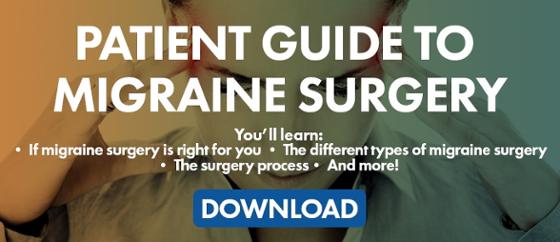
Back to school is already stressful enough for most kids. Still, those who suffer from migraines and other headache disorders have more to consider than most.
In the United States, 10% of children 5 to 15 years old have migraines. As many as 30% of teens from 15 to 19 years old suffer migraines. Overall, 20% of children across the age ranges are prone to headache disorders.
Successful management depends on proper diagnosis and treatment; however, children also need the appropriate responses from parents, teachers, and healthcare providers.
Stress, Stress, and More Stress
The start of school brings with it a host of issues that can cause stress in a child.
- Schedule changes
- A new teacher (or a “notorious” teacher heard of from other students)
- Academic stress
- Social pressures
Then, along comes COVID-19 to upend even more of children’s lives. They have to worry about wearing a mask, learning remotely or in a hybrid learning environment, and the difficulty in making friends.
Even if a child has experienced one pandemic school year, the experience doesn’t reduce the stress of living through another. Many are afraid of falling behind, never to catch up. Others have difficulty learning online instead of in a classroom. Also, there is a concern about whether remote learning will be made available if COVID case numbers rise.
For kids in underprivileged areas, they have the additional problems of relying on school for food and masks or having no access to technology at home. Underfunded school districts may not have the necessary equipment for remote learning.
How Parents and Teachers Can Help Reduce or Eliminate Migraines and Stress Headaches
Being a parent means learning to respond appropriately to a bevy of problems. The best way to help a child who suffers from migraines is to be responsive and supportive without pampering them. Don’t treat that child differently from other children in the home.
Remain calm about school starting and make morning preparations easy. Lay out clothes, ensure kids get a proper breakfast, and leave plenty of time to get to school.
Keep a Migraine Diary
Keep a migraine diary to help you identify migraine triggers and symptoms. For example, many foods are known migraine triggers. Help your child learn to identify these foods and suggest avoiding them if they are unsure:
- Aged cheese
- Processed foods
- Cured meats
- Nuts, chocolate, and raising
- Yeast-containing baked goods
- MSG - monosodium glutamate
Identify Early (Prodrome) Symptoms
Some children have symptoms that announce a migraine is likely on the way. These symptoms can occur hours or days before the migraine strikes. Look for the following:
- Stiff neck
- Excess fatigue and yawning
- Euphoria
- Changes in bowel or urination habits
- Ringing in the ears
- Social withdrawal
- Low or irritable mood
- Difficulty concentrating
- Pale skin
- Dark shadows under the eyes
Some children experience an aura before or during migraines. Auras are sensory disturbances that can last five minutes to an hour and are more typically present during head pain.
- Bright flashes or spots of colored light affecting the eyes
- Tingling in hands, feet, or face often followed by numbness
- Other visual or sensory disturbances
- Language issues
- Retinal or motor problems
- Neurological symptoms
Create an Action Plan
Meet with school staff and put an action plan for times when your child exhibits migraine symptoms. Many teachers and other staff members are unfamiliar with migraine issues or may assume children don't suffer them.
Meet at the start of the school year with each teacher, the school nurse, and the school administrators. Provide a written list of prodrome warning signs to help people recognize incipient migraines in your child. Also, explain typical migraine symptoms.
Get a letter from the child’s primary care physician. In it, the doctor should explain the migraine diagnosis and why treatment is necessary. It should also talk about medications and prevention. Also, get permission slips completed.
Be sure to follow school protocol for times when your child experiences prodrome or migraine symptoms. Who should the child seek for help? Explain prodrome symptoms to the teachers and explain what your child may need to do to prevent a migraine.
- Find a quick snack
- Get some water
- Find a place with low light and catch a quick nap
- Perform yoga or relaxation breathing techniques to reduce stress
Explain how and when to contact a parent, including when:
- The migraine doesn’t improve in two hours, even with treatment
- Symptoms that vary significantly from the usual
- Extreme symptoms like vision changes, vomiting, slurred speech, or weakness
- Increased frequency of migraines
Also, be sure there is an adequate supply of medication.
Prevention
Parents:
- Make sure the child has a healthy diet, plenty of exercise, and adequate sleep.
- Stick to a routine as much as possible and make sure your child stays hydrated.
- Look for well-fitting masks that aren’t too tight or too loose.
- Put the computer screen at the appropriate height and ensure proper lighting. The screen shouldn’t be too bright, and the rest of the lighting should be at the same level as the screen.
Teachers:
- Understand that migraines are legitimate biological disorders, not “excuse” headaches.
- Help children remember to take breaks, especially from the computer screen. If you have in-person classes, find safe times to remove masks for a little break, preferably outside and socially distanced.
- Encourage the child with migraine to lie down at the nurse’s office until the symptoms are manageable.
- Offer a sensitive response and don’t embarrass the child in front of peers.
- If the child says they need immediate medication, get them to the school nurse promptly.
When Should a Child Go to the Doctor?
Even though you are used to handling a child with migraines, sometimes a doctor is needed. A child should see a physician in the following cases.
- If they are overusing medication.
- If they are missing too much school due to migraine
- If they are often tardy or leave early
- If the headaches become more frequent despite healthy habits and treatment
Teachers are in a unique place to partner with parents in the care of their children. If you are a teacher, learn when a parent may need to hear about unusual symptoms or behavior attributed to migraines.
Going back to school has always been stressful. If a child suffers migraines, they may occur more often during back to school.
Parents should keep a routine and ensure their child has proper food, exercise, and sleep. Teachers should be aware of how a child who suffers from migraines behaves before and during an attack to provide the appropriate support.
Handled with care, a child or teenage migraineur can have a successful school year, even when a pandemic rears its ugly head.


